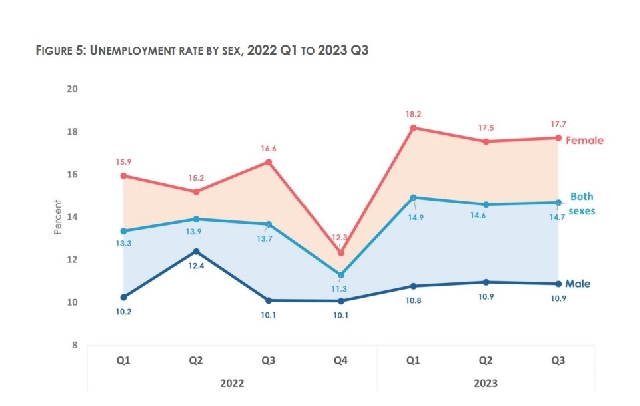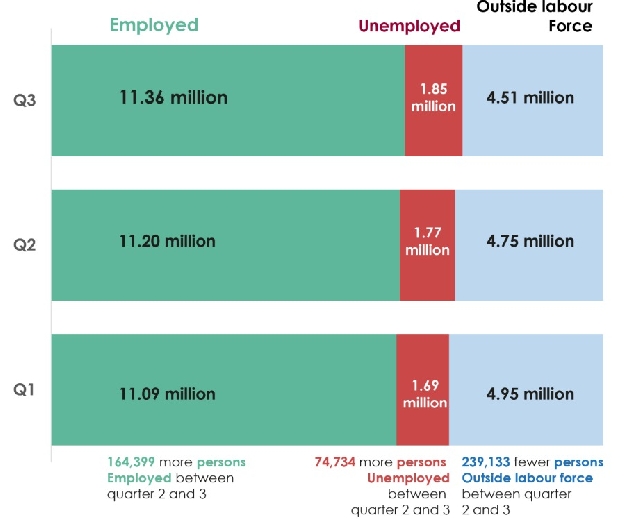Youth unemployment up 14% – GSS
 Unemployed youth
Unemployed youth
The average unemployment rate in the country has soared to 14.7 percent in the first three quarters of 2023, according to data obtained from the Annual Household Income and Expenditure Survey Quarter Three Labour Bulletin by the Ghana Statistical Service (GSS).
Disturbingly, the number of unemployed youth aged between 15 and 35 increased from approximately 1.2 million to over 1.3 million during the same period, with a consistently higher rate among females than males.
The survey further indicated that the number of youth without jobs in 2022 only saw a dip in the second quarter of last year.
The sharp increase in the unemployment rate of females between the fourth quarter of 2022 and the first quarter of 2023 has culminated in a wider unemployment gender gap in 2023 relative to 2022.
About 440,000 persons joined the labour force between 2023 Q1 and 2023 Q3, of which more than 60.0 per cent were employed during the period. Consistently, more females than males have been employed, with the difference averaging about 600,000 and 900,000 for 2022 and 2023 respectively.

The number of employed persons in urban areas remained nearly the same in the first three quarters of 2023 after quarterly variations in 2022.
The number of employed persons in rural areas increased for five consecutive quarters from 2022 Q2, before declining in the third quarter of 2023.
The difference in the unemployment rates between urban and rural areas widened successively for the first three quarters of 2023.
In the second and third quarters of 2023, the urban unemployment rate was almost twice compared to rural areas. The average unemployment rate for the first three quarters of 2023 was 14.7 percent, with the rate among females consistently higher than males.
The sharp increase in unemployment rate of females between the fourth quarter of 2022 and the first quarter of 2023 has culminated in a wider unemployment gender gap in 2023 relative to 2022.
The labour force participation rate increased significantly between the fourth quarter of 2022 and the first quarter of 2023 but remained stable across the first three quarters of 2023.
Consistently, the ability of the labour market to absorb or accommodate individuals seeking employment (absorption rate) increased from the second quarter of 2022 to the third quarter of 2023.

Source: classfmonline.com/Zita Okwang
Trending News

Former Akufo-Addo–appointed MMDCEs demand payment of ESB
13:12
IGP Special Operations Team arrests suspected drug peddlers in Tamale crackdown
12:57
E/R: Bee attack injures several residents in Abotanso community
13:03
Adwoa Safo defends Bawumia, urges NPP delegates to reject blame over economy
11:50
Ex-footballer says he was wrongfully jailed after ‘hook-up’ encounter; claims police freed key suspect after allegedly taking bribe
12:38
Gov't to introduce awards scheme for cleanest regions, districts: President Mahama announces
13:47
Ghana chamber of mines urges government to pause mining royalty reforms
12:50
Ghana Library Authority begins review of 55-year-old law establishing it
12:42
HIV cases rise in Volta Region amid poor condom use among youth
13:15
NDC Legal Director expresses concern over confusion surrounding Daddy Lumba’s funeral
12:20



